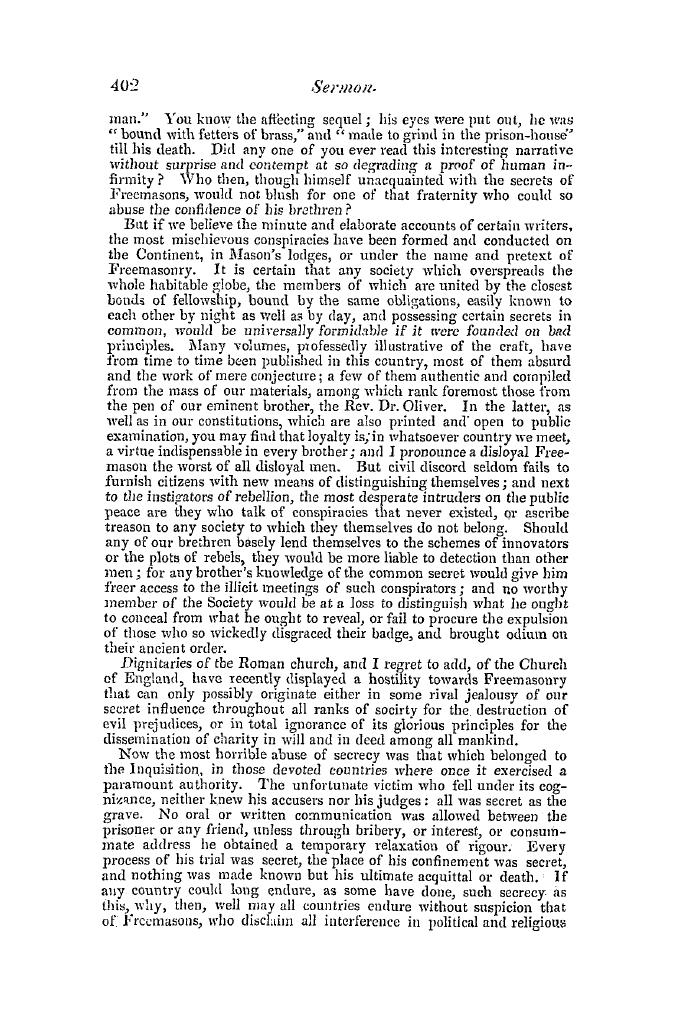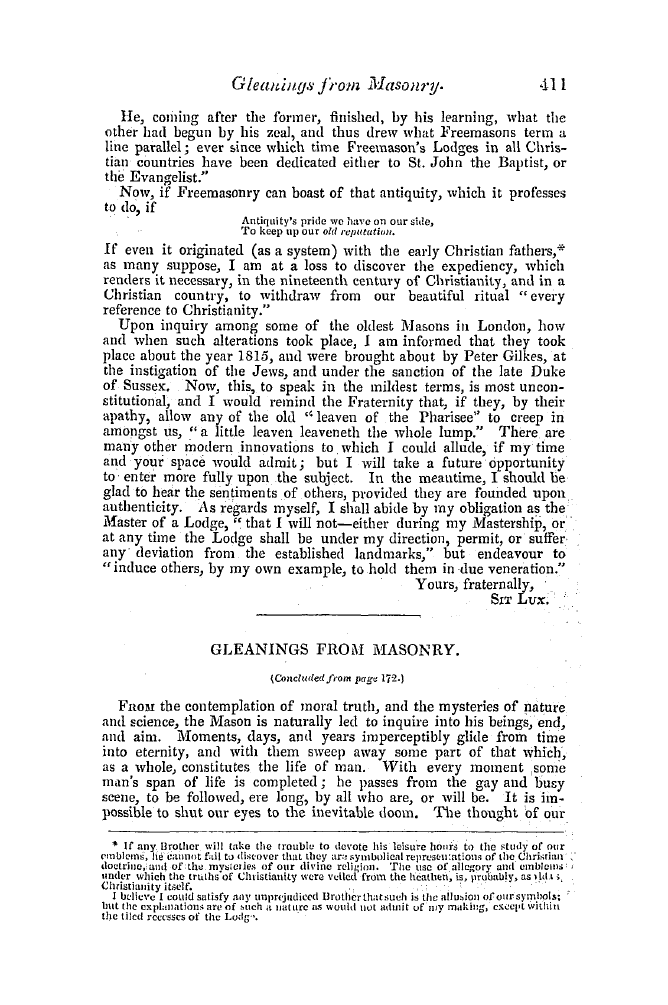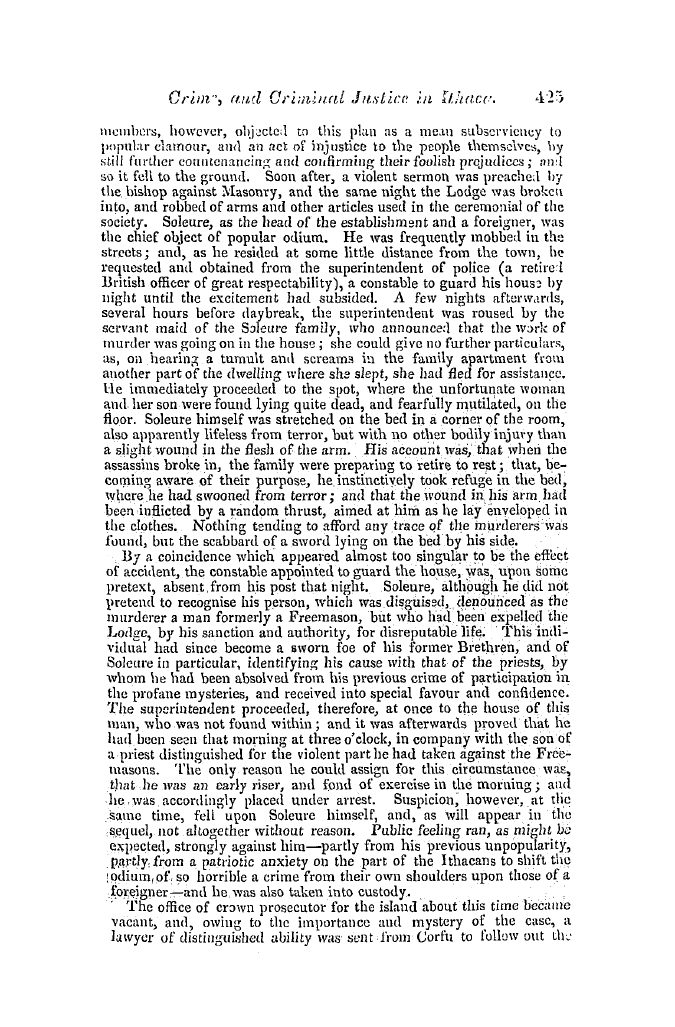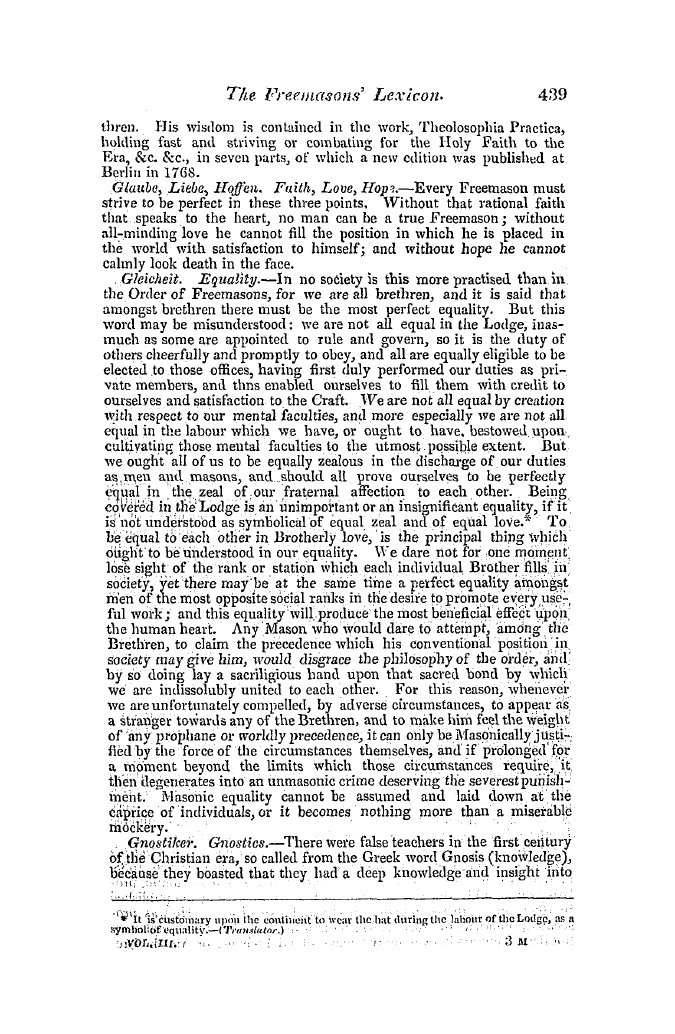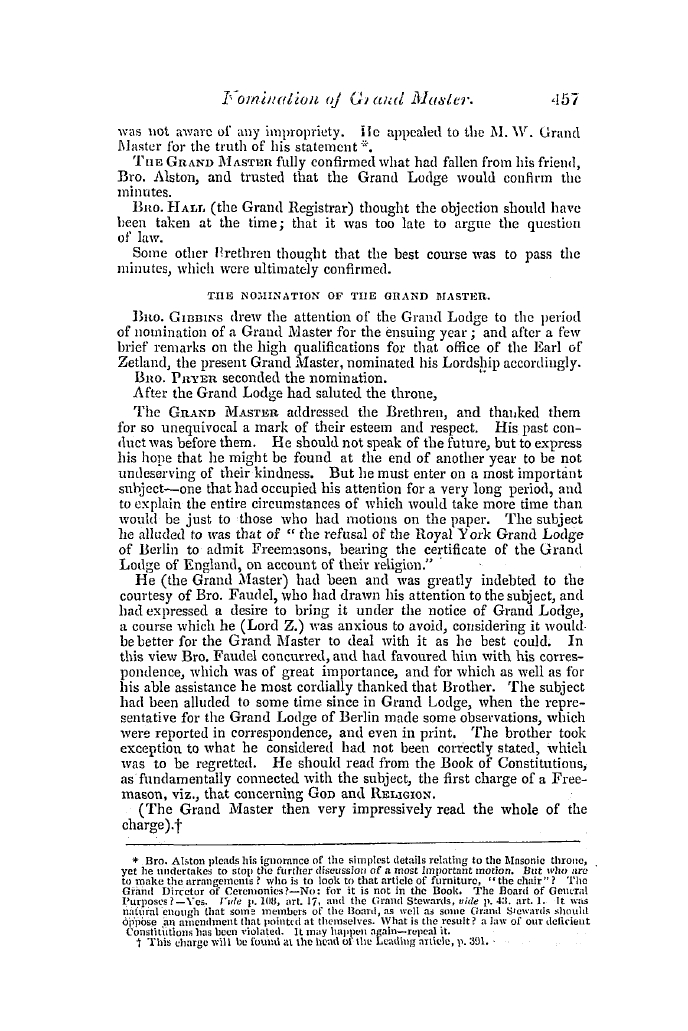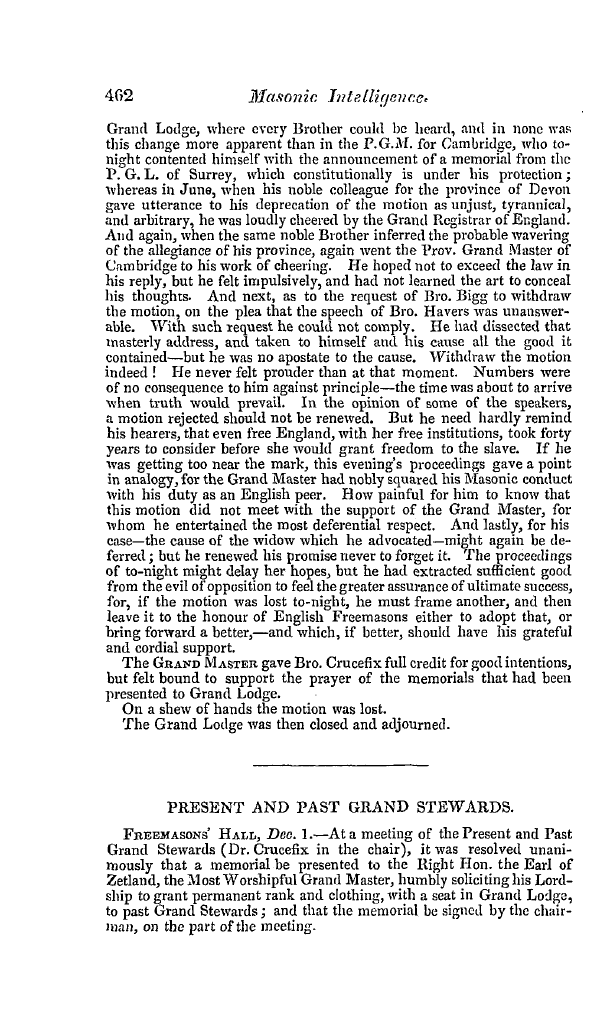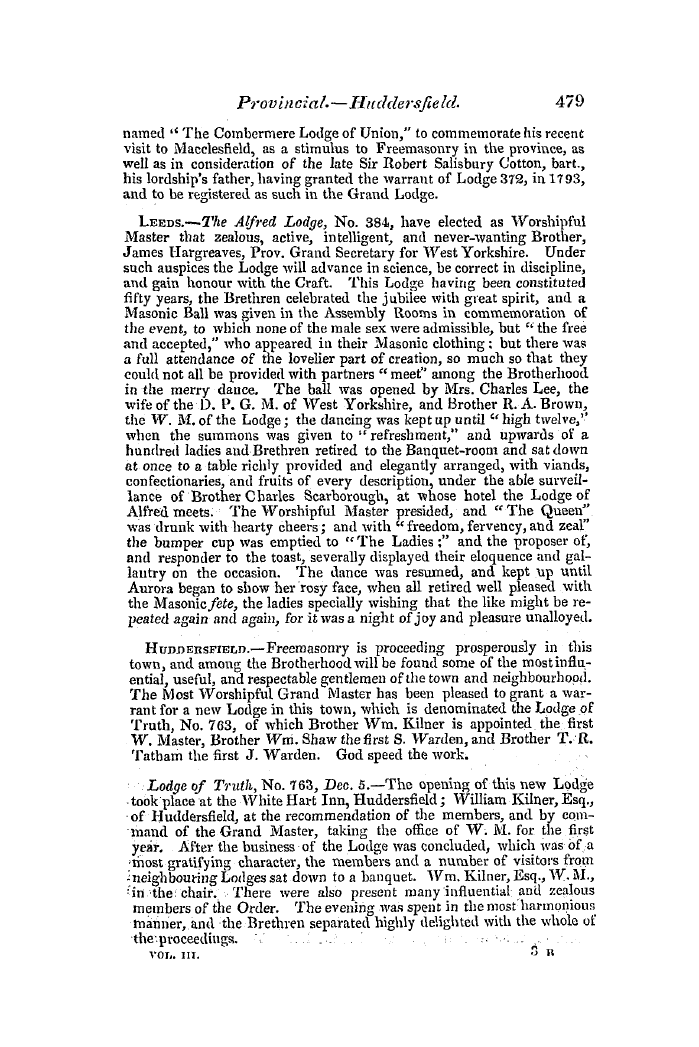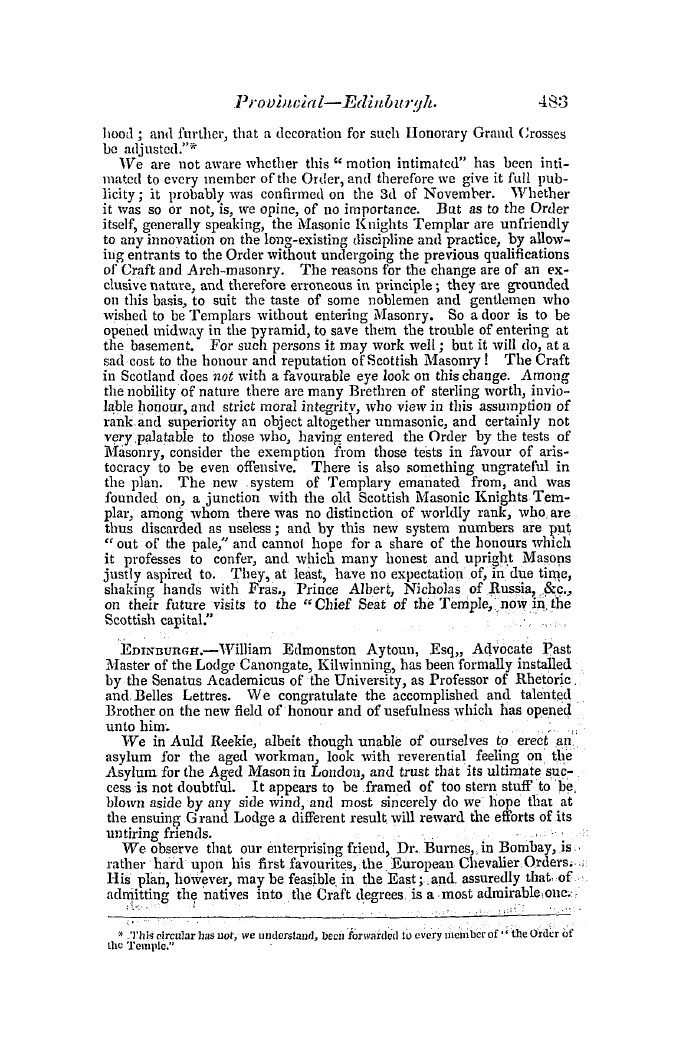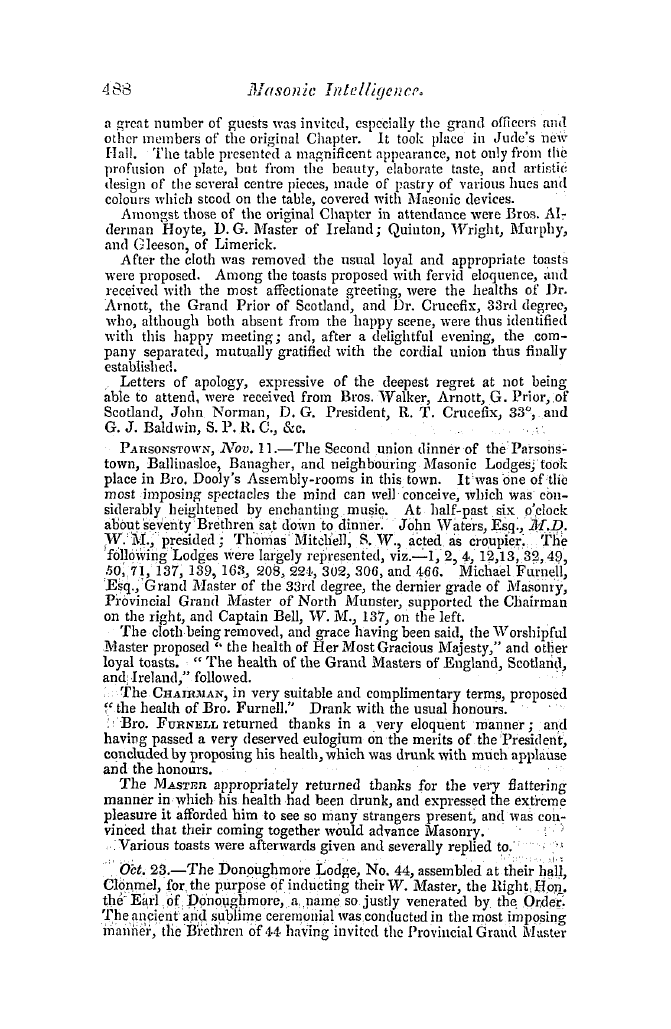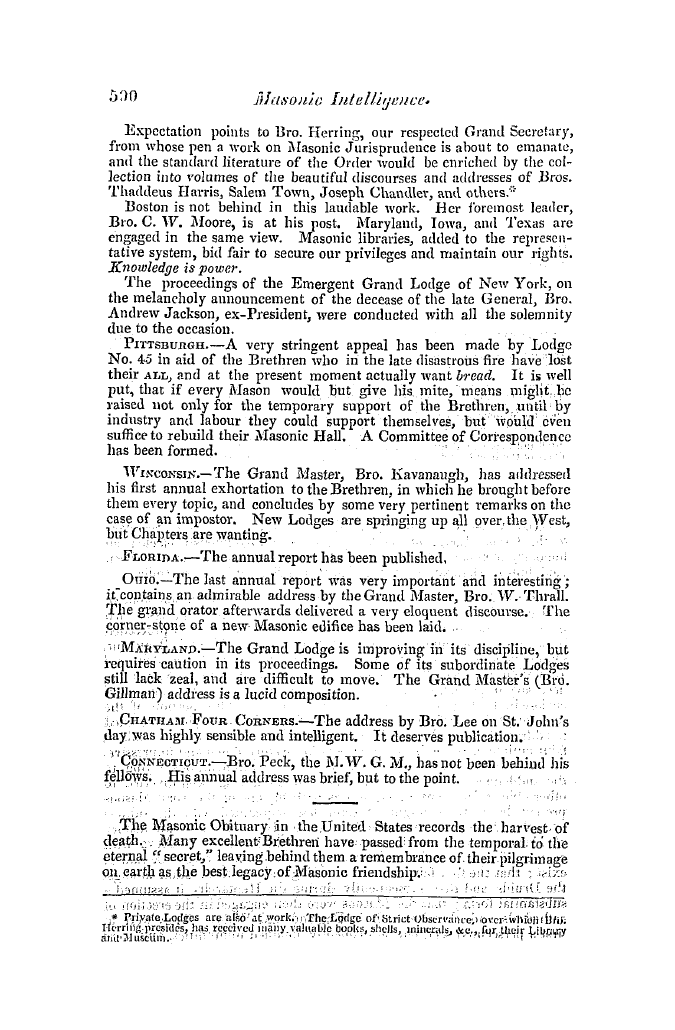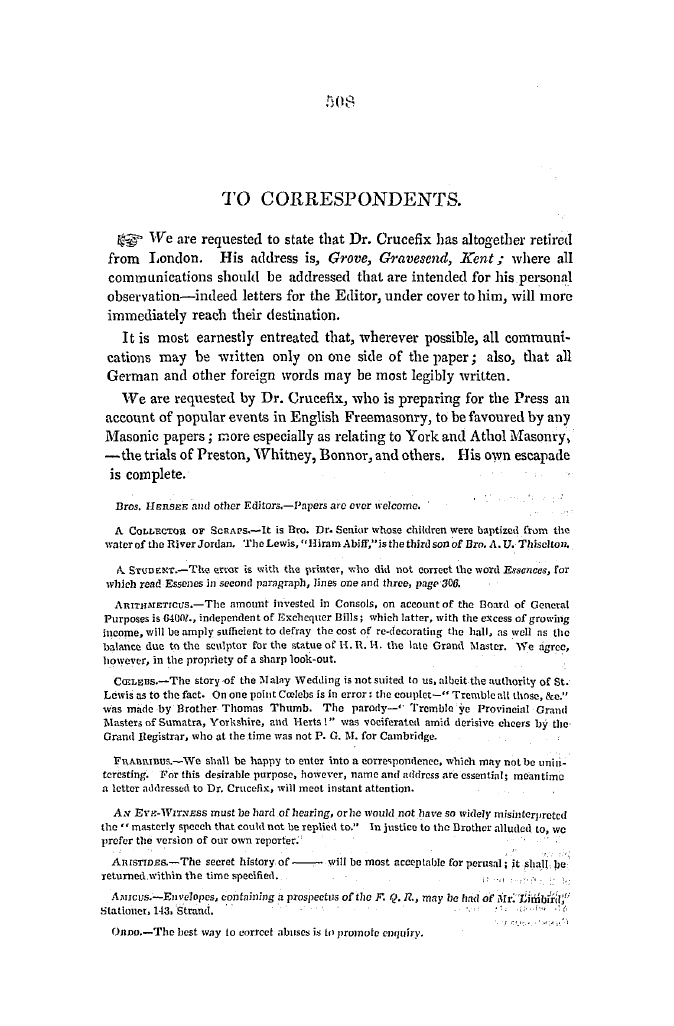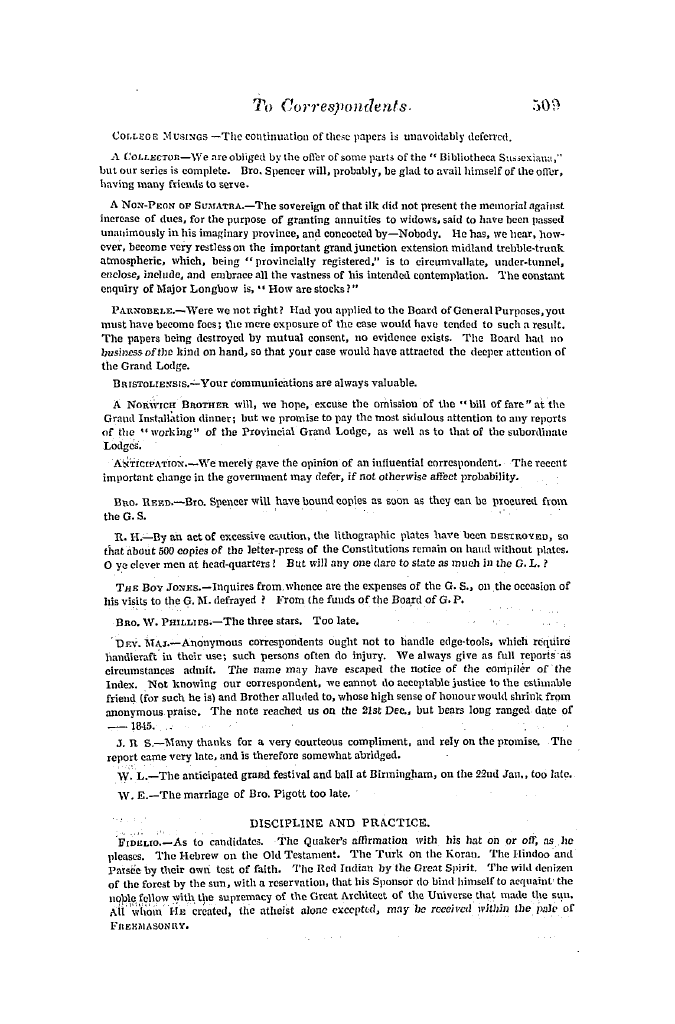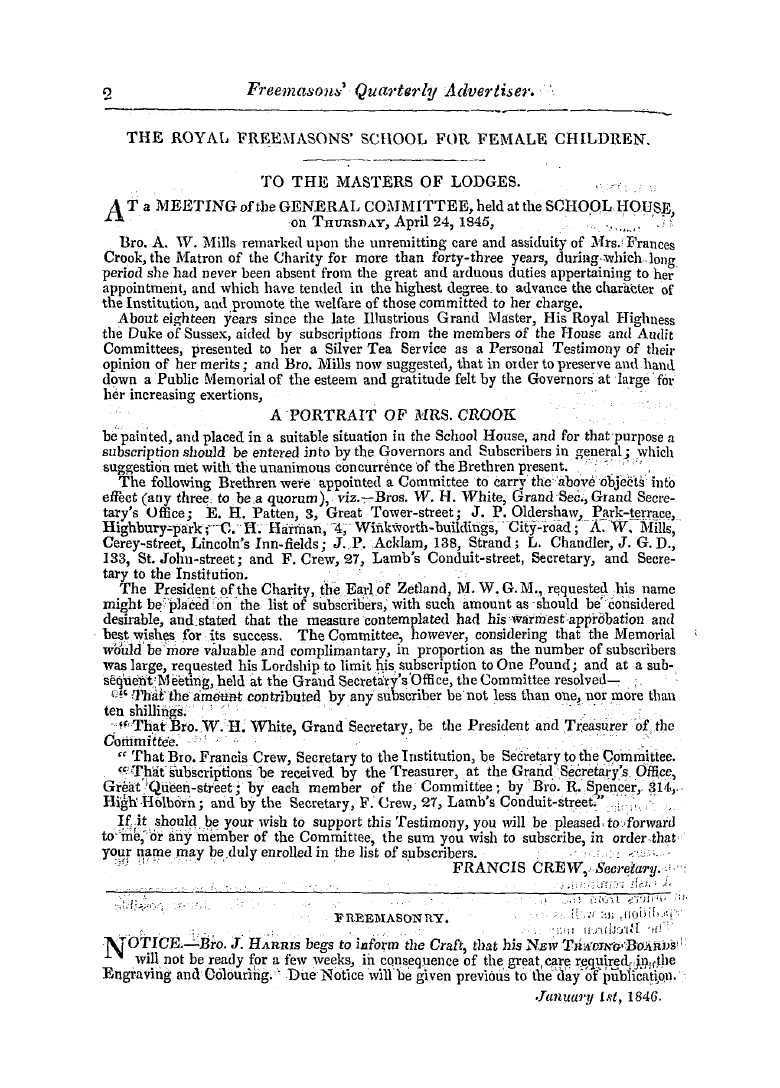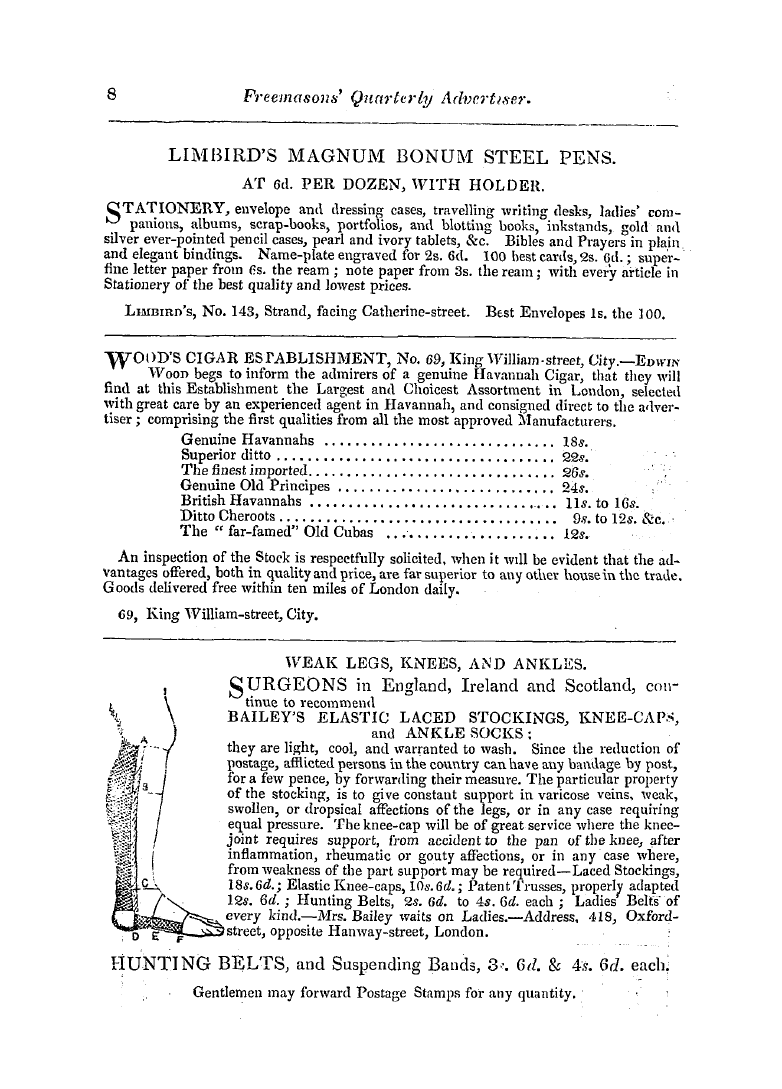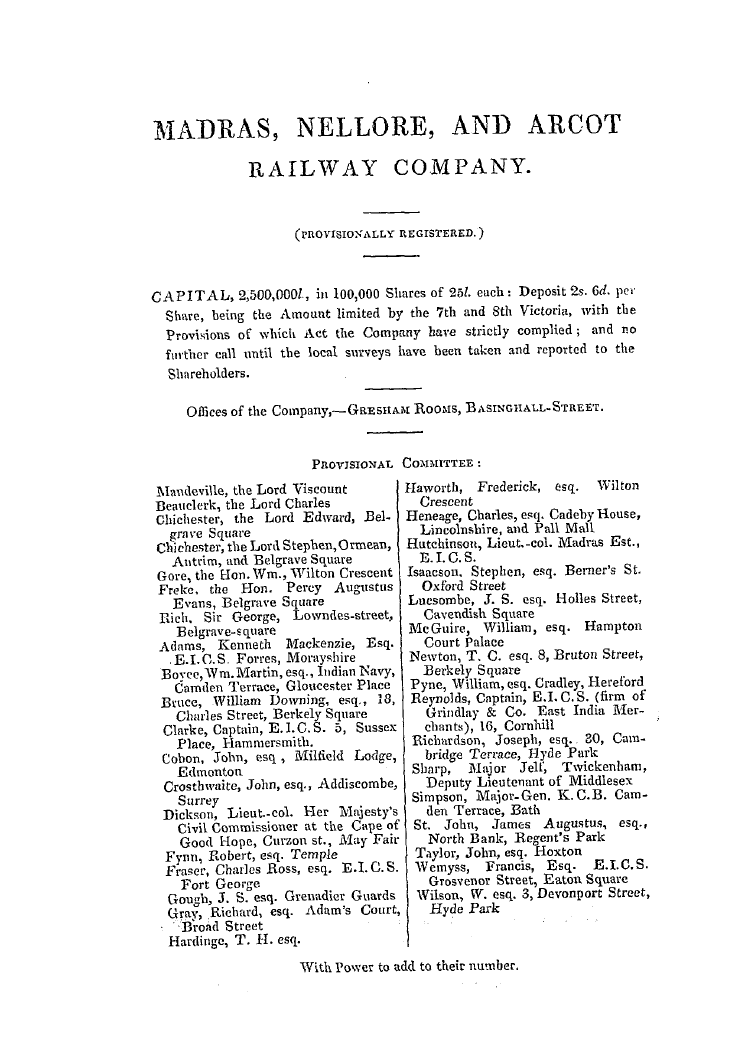-
Articles/Ads
Article MASONS' MARKS. ← Page 3 of 3
Note: This text has been automatically extracted via Optical Character Recognition (OCR) software.
Masons' Marks.
is perfectly unique ; the arch is found in every possible variety , and the pillars , walls , and decorations present a combination of every preceding style , Grecian , Roman , Saracenic , ancl Gothic . There is unquestionably no other building of the period which can be at all compared to it ; and though composed of such apparently incongruous principles , the effect of the whole is gorgeous in the extreme , and shows the exquisite skill of the craftsmen engaged in its construction .
The third , fourth , and fifth marks are from the apprentices' pillar , and their appearance there forms a complete refutation of the vulgar tradition which accounts for the erection of this singularly beautiful piece of architecture , since it is quite clear that the workmen employed upon it must have been Mark masons , and consequently it could not have been the work of an apprentice . It is , however , worthy of remark , that on the architrave which joins this pillar to a smaller one in the
south wall , is an inscription in Gothic characters , containing sentences having a particular reference to the Red-Cross Degree in Masonry ; and amongst the sculptured figures there is one of a man with a wound in the centre of his forehead , which may have given rise to the legend alluded to , although it unquestionably bore a very different reference . Roslyn Chapel was finished about the year 1446 . It was built by William St . Clair , one of the great ancl powerful earls of Roslyn , whose
family were by the Scottish monarchs constituted hereditary Grand Masters of the Masons of Scotland . There is a peculiarity in the marks in Roslyn Chapel which particularly attracted my notice . The marks at Holyrood and Winchester , as
well as those at Canterbury and other places where I have noticed them , have the triangle for their base or principle , in the same way as that figure or principle is used and understood at the present time in the Royal Arch Degree ; the ultimate reference being to the triunessent nature of the Deity , which is symbolized by the triangle , forming , as it always has done , the significant emblem of all Free-masonic works , whether operative or speculative . In the marks at Roslyn Chapel , it will be seenthat the cross as well as the triangle form an essential
ingre-, dient in their composition . I have not as yet observed this peculiarity in any other place , and therefore deem it worthy of particular notice . The cross here may be intended to have the same signification as the Masonic tau , or sign of life-eternal ; but it seems more likely , from its absence in the signs or marks in other buildings , that it was adopted by the workmen engaged in the erection of Roslyn Chapel , for some especial reason . The Barons of St . Clair , under whose auspices this chapel
was erected , were connected with the combined orders of Templars and Knights of St . John , and as there is , and has been for centuries ( and particularly in Scotland ) , an intimate connexion subsisting between the ancient religious and chivalric Orders and Freemasonry , it is possible that the peculiarity in question may have arisen from that circumstance . This , however , is a matter in which further investigation and comparisonand particularlin works erected under the sanction of the
, y Knights' Templars and Hospitallers , will be necessary , before anything like a . satisfactory conclusion can be formed ; but as the subject is now undergoing investigation , it is probable that much additional information will shortly be obtained . 17 , Pavement , Finsbury Square , ... ,. > ' . December ; 1845 .
Note: This text has been automatically extracted via Optical Character Recognition (OCR) software.
Masons' Marks.
is perfectly unique ; the arch is found in every possible variety , and the pillars , walls , and decorations present a combination of every preceding style , Grecian , Roman , Saracenic , ancl Gothic . There is unquestionably no other building of the period which can be at all compared to it ; and though composed of such apparently incongruous principles , the effect of the whole is gorgeous in the extreme , and shows the exquisite skill of the craftsmen engaged in its construction .
The third , fourth , and fifth marks are from the apprentices' pillar , and their appearance there forms a complete refutation of the vulgar tradition which accounts for the erection of this singularly beautiful piece of architecture , since it is quite clear that the workmen employed upon it must have been Mark masons , and consequently it could not have been the work of an apprentice . It is , however , worthy of remark , that on the architrave which joins this pillar to a smaller one in the
south wall , is an inscription in Gothic characters , containing sentences having a particular reference to the Red-Cross Degree in Masonry ; and amongst the sculptured figures there is one of a man with a wound in the centre of his forehead , which may have given rise to the legend alluded to , although it unquestionably bore a very different reference . Roslyn Chapel was finished about the year 1446 . It was built by William St . Clair , one of the great ancl powerful earls of Roslyn , whose
family were by the Scottish monarchs constituted hereditary Grand Masters of the Masons of Scotland . There is a peculiarity in the marks in Roslyn Chapel which particularly attracted my notice . The marks at Holyrood and Winchester , as
well as those at Canterbury and other places where I have noticed them , have the triangle for their base or principle , in the same way as that figure or principle is used and understood at the present time in the Royal Arch Degree ; the ultimate reference being to the triunessent nature of the Deity , which is symbolized by the triangle , forming , as it always has done , the significant emblem of all Free-masonic works , whether operative or speculative . In the marks at Roslyn Chapel , it will be seenthat the cross as well as the triangle form an essential
ingre-, dient in their composition . I have not as yet observed this peculiarity in any other place , and therefore deem it worthy of particular notice . The cross here may be intended to have the same signification as the Masonic tau , or sign of life-eternal ; but it seems more likely , from its absence in the signs or marks in other buildings , that it was adopted by the workmen engaged in the erection of Roslyn Chapel , for some especial reason . The Barons of St . Clair , under whose auspices this chapel
was erected , were connected with the combined orders of Templars and Knights of St . John , and as there is , and has been for centuries ( and particularly in Scotland ) , an intimate connexion subsisting between the ancient religious and chivalric Orders and Freemasonry , it is possible that the peculiarity in question may have arisen from that circumstance . This , however , is a matter in which further investigation and comparisonand particularlin works erected under the sanction of the
, y Knights' Templars and Hospitallers , will be necessary , before anything like a . satisfactory conclusion can be formed ; but as the subject is now undergoing investigation , it is probable that much additional information will shortly be obtained . 17 , Pavement , Finsbury Square , ... ,. > ' . December ; 1845 .













